#DeFiTech
Explore tagged Tumblr posts
Text

🚀 𝐋𝐞𝐚𝐝 𝐭𝐡𝐞 𝐃𝐞𝐅𝐢 𝐫𝐞𝐯𝐨𝐥𝐮𝐭𝐢𝐨𝐧
🌐 Empower your business with high-performance staking solutions from 𝐖𝐞𝐛𝐜𝐨𝐦 𝐒𝐲𝐬𝐭𝐞𝐦𝐬.
💼 Take the first step towards decentralized success today!
➡️ 𝐑𝐞𝐚𝐝𝐲 𝐭𝐨 𝐭𝐫𝐚𝐧𝐬𝐟𝐨𝐫𝐦 𝐲𝐨𝐮𝐫 𝐃𝐞𝐅𝐢 𝐟𝐮𝐭𝐮𝐫𝐞?
🌎 https://www.webcomsystem.net 📧 [email protected] ☎️ 𝐆𝐞𝐭 𝐢𝐧 𝐓𝐨𝐮𝐜𝐡 𝐖𝐢𝐭𝐡 𝐔𝐬 𝐓𝐨𝐝𝐚𝐲 at 📱 +91 8699 701 099 𝐒𝐭𝐚𝐫𝐭 𝐖𝐢𝐭𝐡 𝐀 𝐐𝐮𝐨𝐭𝐞!!
#DeFiDevelopment#DeFiSolutions#StakingPlatforms#WebcomSystems#CryptoBusiness#DeFiEra#StakingSolutions#BlockchainDevelopment#DecentralizedFinance#CryptoInnovations#FutureOfFinance#SecurePlatforms#BusinessGrowth#CustomDeFi#CryptoSolutions#DeFiTech#ScalableSolutions#CryptoStaking#DeFiPlatforms#StakingDevelopment
0 notes
Text

당신만의 마이너를 만들어 저처럼 BTC를 벌기 시작하세요 제 프로모션 코드 mZiYf를 사용하면 5% 캐시백을 받을 수 있어요! https://gomining.com/og?ref=mZiYf&ogTagId=189207
Create your miner and start earning BTC like me. Use my promo code mZiYf for 5% cashback! https://gomining.com/og?ref=mZiYf&ogTagId=189228
https://linktr.ee/juhwan36
너를 World App에 초대해.
여기 링크야: https://world.org/join/XP3MK6T
#SurvivalBias
#EvolvedMorality
#MoralRelativity
#LegalConstruct
#HumanInstinct
#SocialConstructs
#EthicsDebate
#CultureShapesMorals
#NatureVsNurture
# 암호화폐(Cryptocurrency)
1. #비트코인 #Bitcoin
2. #암호화폐 #Cryptocurrency
3. #블록체인 #Blockchain
4. #이더리움 #Ethereum
5. #디지털자산 #DigitalAssets
6. #NFT #NonFungibleToken
7. #크립토투자 #CryptoInvestment
8. #탈중앙화 #Decentralization
9. #가상화폐 #VirtualCurrency
10. #코인트레이딩 #CoinTrading
11. #DeFi #DecentrailizedFinance
12. #암호화폐시장 #CryptoMarket
13. #마이닝 #Crypto Mining
14. #알트코인 #Altcoin
15. #투자 #Invest
16. #디파이 #DeFiTech
17. #암호경제 #CryptoEconomy
18. #디지털머니 #DigitalMoney
19. #코인 #Coin
20. #거래소 #CryptoExchange
21. #투자전략 #InvestmentStrategy
22. #블록체인기술 #BlockchainTechnology
23. #크립토트렌드 #CryptoTrends
24. #디지털경제 #DigitalEconomy
25. #리플 #Ripple
26. #도지코인 #Dogecoin
27. #스마트컨트랙트 #SmartContract
28. #암호화폐뉴스 #CryptoNews
29. #코인투자 #CoinInvestment
30. #크립토거버넌스 #CryptoGovernance
31. #토큰 #Token
32. #암호화폐규제 #CryptoRegulation
33. #탈중앙화금융 #DecentralizedFinance
34. #크립토마케팅 #CryptoMarketing
35. #웹3 #Web3
36. #암호화폐분석 #CryptoAnalysis
37. #크립토머니 #CryptoMoney
38. #블록체인혁명 #BlockchainRevolution
39. #디지털자산투자 #DigitalAssetInvestment
40. #메타버스 #Metaverse
41. #암호화폐교육 #CryptoEducation
42. #크립토리스크 #CryptoRisk
43. #대체투자 #AlternativeInvestment
44. #암호화폐트렌드 #CryptoTrend
45. #디지털금융 #DigitalFinance
46. #크립토보안 #CryptoSecurity
47. #해시 #Hash
48. #투자포트폴리오 #InvestmentPortfolio
49. #암호화폐전망 #CryptoForecast
50. #혁신기술 #InnovativeTechnology
0 notes
Text
Medical imaging aims to bring the invisible to light
28.08.24 - Medical imaging technology – such as MRI, ultrasound and X-ray – is gaining in power and precision, especially in the wake of recent breakthroughs in artificial intelligence. Several EPFL research groups are contributing to this progress and actively shaping the future in this area. Thanks to advances in medical imaging, doctors can localize a bone fracture, detect a tumor and observe a baby inside the uterus, all in a completely noninvasive manner. There’s no telling just how far we’ll be able to see inside the human body one day. The technology is developing at a rapid pace, generating images with ever-higher resolution that can be used to spot ever-smaller anomalies. In the area of magnetic resonance imaging (MRI), Prof. Dimitri Van De Ville, the head of EPFL’s Medical Image Processing Lab, has identified two opposing trends. “The first trend is an increase in the strength of machines’ magnetic fields, enabling them to reveal tiny irregularities such as microscopic injuries and very early-stage cancer cells,” say Van de Ville. Most MRI machines in hospitals today have a magnetic field of 1.5 or 3 teslas s. Engineers at the Alternative Energies & Atomic Energy Commission near Paris have invented a machine with a magnetic field of 11.7 teslas – the most powerful in the world. According to Prof. Jean-Philippe Thiran, the head of EPFL’s Signal Processing Laboratory, “the stronger the magnetic field, the better we can pick up weak signals that are otherwise hard to catch, giving us more granular information.” At EPFL, engineers have developed a 7-tesla machine – powerful enough to map human brains by neural layer in vivo. Prof. Friedhelm Hummel, the holder of the Defitech Chair of Clinical Neuroengineering, explains: “This will give us a better understanding of human brain structures, because for now the exact role of each structure isn’t really clear.” The second trend that Van De Ville identified goes in the opposite direction: the development of machines that have a magnetic field of well below 1.5 teslas, yet that can still generate images of good enough quality to make sound diagnoses. The goal is to create low-cost devices that are easy to transport and install, which can be especially useful in developing countries. “This will be possible thanks to breakthroughs in imaging sensors, devices and data processing – some of which are being made right here at EPFL,” says Van De Ville. The stronger the magnetic field, the better we can pick up weak signals that are otherwise hard to catch, giving us more granular information. Jean-Philippe Thiran, professor and head of EPFL’s Signal Processing Laboratory Ultrasound making a comeback Another imaging technology – ultrasound – has changed very little since it was first invented. “Ultrasound is used to observe a patient’s heartbeat or a baby moving inside the womb, for example,” says Thiran, who specializes in this technology. Scientists have been taking a fresh look at ultrasound’s potential in recent years, as it can be coupled with systems for performing real-time calculations. “The latest machines are equipped with extremely powerful calculators that can process huge amounts of data in real time,” says Thiran. “For instance, we can now measure a tissue’s physical properties such as its elasticity. That will be useful for detecting cirrhosis and other liver diseases.” The powerful calculators will also enable ultrasound machines to run a lot faster. Today they can generate 30 to 40 images per second, but in the not-too-distant future their output will rise to 1,000 to 2,000 images per second. “That will let doctors observe dynamic processes such as blood flow, including in the brain,” says Thiran. The artificial intelligence revolution Artificial intelligence, including machine learning, data processing and algorithms, will be a key component of tomorrow’s medical imaging systems. “AI is revolutionizing the field of medical… http://actu.epfl.ch/news/medical-imaging-aims-to-bring-the-invisible-to-lig (Source of the original content)
0 notes
Text
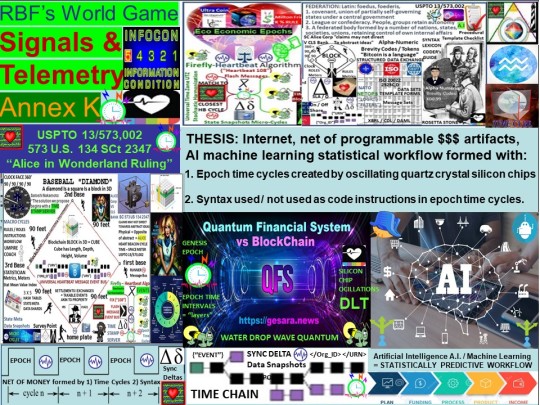

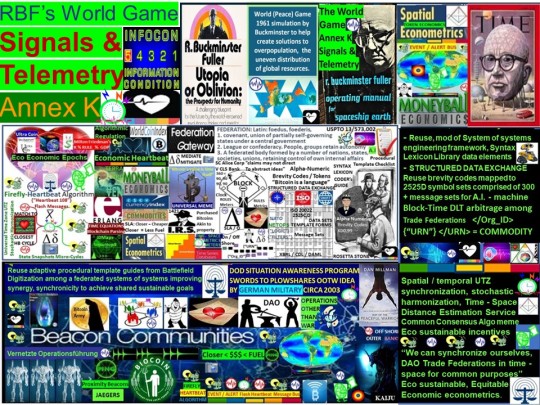
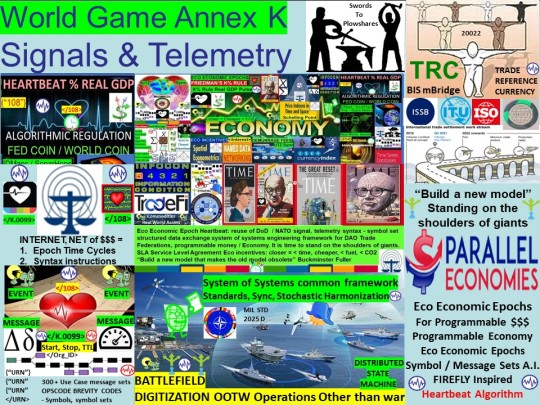
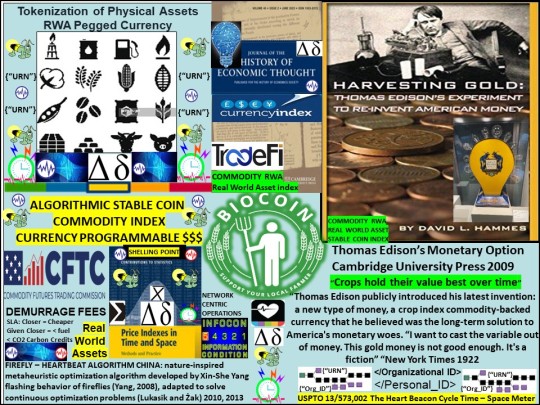

Signals & Telemetry Annex K for RBF's World Game / DeFi, Fintech foundation tech / USPTO 13/573,002 Heart Beacon Cycle Time - Space $ meter, metrics, standards, structured data exchange, time sync - stochastic harmonization
#DeFiTech #Fintech #BlockchainAI #artificialintelligence
1 note
·
View note
Photo
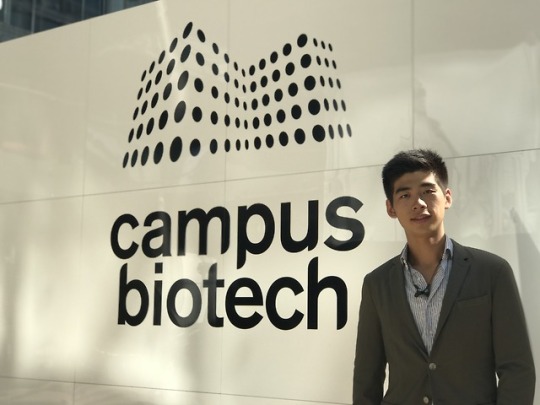
I was only nine years old when I first visited Switzerland. At that time, I was overwhelmed by what every travel guide will tell you - come to Switzerland for its grandiose landscape. However, what I didn’t realize is that however jaw-dropping Mount Titlis or Lake Geneva can be, the real beauty of Switzerland comes from its people, its schools and its cultures.
Over the summer, I worked in Campus Biotech of the Federal Institute of Technology of Switzerland (EPFL), which is right between lake Geneva and the UN. Starting from the first time I stepped into my host lab, the Defitech Chair in Brain Machine Interface (CNBI), I was immediately shocked by the incredible international backgrounds of our lab: as a lab with around 20 members, we come from over 10 different countries. Thus, every coffee break and lunch became a mesmerizing cultural experience. One day we could talk about Serbia's school system, the next day France’s music festival or Austria’s traditional cuisine. Indeed, as of 2017, over 40% of Geneva’s population is not Swiss citizens (or at least so I heard). As a result, living in Geneva, it doesn’t take long for me to feel like I truly belonged, for I know being international there is almost more of a norm than exception. Indeed, if you think about it, it is incredible how every person comes from a distinctive background, and yet in a sense we are all the same. I believe there are few cities in this world that could rival Switzerland’s cultural tolerance. And such cultural exposure is indeed a once-in-a-lifetime opportunity.
Moreover, I was also amazed by the autonomy I enjoyed in my research experience. My project was on using Brain Machine Interface to assist in the symbolic control of drones, with a specific focus on developing a classification algorithm to improve workload-level detection. And starting from day one, my advisors did a fantastic job introducing the background of the project, but they also made sure to give me great autonomy in defining the end goal, milestones and timeline of my research. Therefore, I was able to choose a research focus that best fit my background and my interests. What’s more, I also had great autonomy in choosing how to get help. In other words, there was never any supervisor for my research to keep an eye on my every progress. Instead, I was responsible for getting the help I need, actively discussing my research with other lab members for inspiration, and presenting my research to the general lab meeting. This experience really helped me to understand that, as a researcher, I need to take full ownership of my project and should always be prepared to be proactive. And I also believe that this experience has indeed helped me to hone the communication skills necessary for such a career.
Last but not least, I very much appreciated the community of the ThinkSwiss awardees. For the two-day trip we took together in Bern and Mount Titlis, I quite enjoyed learning about each other’s research and experience in Switzerland, and I felt very bonded with such a closed-knit community. Going on scooter tours, walking around Bern with beers, and chatting until 4AM over a bottle of wine, I felt I connected deeply with my fellow awardees. Indeed, we all chose to embark on an adventure to pursue knowledge in a completely foreign country, to embrace life with energy and optimism. With such a shared passion, we were really the perfect travel companions.
When I wrote down this post, two months had already passed since the conclusion of my stay in Geneva. Even tram stops that I memorized so well had begun to slip away from my memory. Nonetheless, I know that if you told me that I had to move to Geneva now, I would not hesitate, not even for a second, to call it my home one more time.
Thomas Qilong Xin
3 notes
·
View notes
Text
Music and your brain: Scientists seek to understand how your memory of music affects your brain
(Natural News) A team of researchers at the École Polytechnique Fédérale de Lausanne (EFPL) discovered how the memory of music affects the brain. The EFPL team carried out the study through the use of EFPL’s Defitech Foundation Chair in Human-Machine Interface (CNBI) to look at how the brain works when imaginary music is played in...
from NaturalNews.com https://ift.tt/2OKByjC via IFTTT
0 notes
Text
Neurostimulation implantée - Pr. Grégoire Courtine (EPFL - Suisse)
Neurostimulation implantée – Pr. Grégoire Courtine (EPFL – Suisse)
NeuroRestore est un nouveau centre mis en place par la Fondation Defitech, le CHU, la Faculté de biologie et de médecine (FMB) de l’Université de Lausanne (FMB) et l’EPFL pour exploiter l’expertise en neuroréhabilitation et les technologies d’implants neurochirurgicaux auprès des quatre partenaires. Médecins, ingénieurs et chercheurs uniront leurs forces pour développer des “electroceuticals” –…
View On WordPress
0 notes
Text
Music and your brain: Scientists seek to understand how your memory of music affects your brain
(Natural News) A team of researchers at the École Polytechnique Fédérale de Lausanne (EFPL) discovered how the memory of music affects the brain. The EFPL team carried out the study through the use of EFPL’s Defitech Foundation Chair in Human-Machine Interface (CNBI) to look at how the brain works when imaginary music is played in...
from NaturalNews.com https://ift.tt/2OKByjC from Betty Xiong https://ift.tt/2FmG7RE
0 notes
Text
A Dual-Therapy Approach to Boost Motor Recovery After a Stroke
A Dual-Therapy Approach to Boost Motor Recovery After a Stroke
Paralysis of an arm and/or leg is one of the most common effects of a stroke. But thanks to research carried out by scientists at the Defitech Foundation Chair in Brain-Machine Interface, in association with other members of EPFL’s Center for Neuroprothetics, the Clinique Romande de Réadaptation in Sion, and the Geneva University Hospitals, stroke victims may soon be able to recover greater use…
View On WordPress
0 notes
Text

당신만의 마이너를 만들어 저처럼 BTC를 벌기 시작하세요 제 프로모션 코드 mZiYf를 사용하면 5% 캐시백을 받을 수 있어요! https://gomining.com/og?ref=mZiYf&ogTagId=189207
Create your miner and start earning BTC like me. Use my promo code mZiYf for 5% cashback! https://gomining.com/og?ref=mZiYf&ogTagId=189228
https://linktr.ee/juhwan36
너를 World App에 초대해.
여기 링크야: https://world.org/join/XP3MK6T
#SurvivalBias
#EvolvedMorality
#MoralRelativity
#LegalConstruct
#HumanInstinct
#SocialConstructs
#EthicsDebate
#CultureShapesMorals
#NatureVsNurture
# 암호화폐(Cryptocurrency)
1. #비트코인 #Bitcoin
2. #암호화폐 #Cryptocurrency
3. #블록체인 #Blockchain
4. #이더리움 #Ethereum
5. #디지털자산 #DigitalAssets
6. #NFT #NonFungibleToken
7. #크립토투자 #CryptoInvestment
8. #탈중앙화 #Decentralization
9. #가상화폐 #VirtualCurrency
10. #코인트레이딩 #CoinTrading
11. #DeFi #DecentrailizedFinance
12. #암호화폐시장 #CryptoMarket
13. #마이닝 #Crypto Mining
14. #알트코인 #Altcoin
15. #투자 #Invest
16. #디파이 #DeFiTech
17. #암호경제 #CryptoEconomy
18. #디지털머니 #DigitalMoney
19. #코인 #Coin
20. #거래소 #CryptoExchange
21. #투자전략 #InvestmentStrategy
22. #블록체인기술 #BlockchainTechnology
23. #크립토트렌드 #CryptoTrends
24. #디지털경제 #DigitalEconomy
25. #리플 #Ripple
26. #도지코인 #Dogecoin
27. #스마트컨트랙트 #SmartContract
28. #암호화폐뉴스 #CryptoNews
29. #코인투자 #CoinInvestment
30. #크립토거버넌스 #CryptoGovernance
31. #토큰 #Token
32. #암호화폐규제 #CryptoRegulation
33. #탈중앙화금융 #DecentralizedFinance
34. #크립토마케팅 #CryptoMarketing
35. #웹3 #Web3
36. #암호화폐분석 #CryptoAnalysis
37. #크립토머니 #CryptoMoney
38. #블록체인혁명 #BlockchainRevolution
39. #디지털자산투자 #DigitalAssetInvestment
40. #메타버스 #Metaverse
41. #암호화폐교육 #CryptoEducation
42. #크립토리스크 #CryptoRisk
43. #대체투자 #AlternativeInvestment
44. #암호화폐트렌드 #CryptoTrend
45. #디지털금융 #DigitalFinance
46. #크립토보안 #CryptoSecurity
47. #해시 #Hash
48. #투자포트폴리오 #InvestmentPortfolio
49. #암호화폐전망 #CryptoForecast
50. #혁신기술 #InnovativeTechnology
0 notes
Text

당신만의 마이너를 만들어 저처럼 BTC를 벌기 시작하세요 제 프로모션 코드 mZiYf를 사용하면 5% 캐시백을 받을 수 있어요! https://gomining.com/og?ref=mZiYf&ogTagId=189207
Create your miner and start earning BTC like me. Use my promo code mZiYf for 5% cashback! https://gomining.com/og?ref=mZiYf&ogTagId=189228
https://linktr.ee/juhwan36
너를 World App에 초대해.
여기 링크야: https://world.org/join/XP3MK6T
#SurvivalBias
#EvolvedMorality
#MoralRelativity
#LegalConstruct
#HumanInstinct
#SocialConstructs
#EthicsDebate
#CultureShapesMorals
#NatureVsNurture
# 암호화폐(Cryptocurrency)
1. #비트코인 #Bitcoin
2. #암호화폐 #Cryptocurrency
3. #블록체인 #Blockchain
4. #이더리움 #Ethereum
5. #디지털자산 #DigitalAssets
6. #NFT #NonFungibleToken
7. #크립토투자 #CryptoInvestment
8. #탈중앙화 #Decentralization
9. #가상화폐 #VirtualCurrency
10. #코인트레이딩 #CoinTrading
11. #DeFi #DecentrailizedFinance
12. #암호화폐시장 #CryptoMarket
13. #마이닝 #Crypto Mining
14. #알트코인 #Altcoin
15. #투자 #Invest
16. #디파이 #DeFiTech
17. #암호경제 #CryptoEconomy
18. #디지털머니 #DigitalMoney
19. #코인 #Coin
20. #거래소 #CryptoExchange
21. #투자전략 #InvestmentStrategy
22. #블록체인기술 #BlockchainTechnology
23. #크립토트렌드 #CryptoTrends
24. #디지털경제 #DigitalEconomy
25. #리플 #Ripple
26. #도지코인 #Dogecoin
27. #스마트컨트랙트 #SmartContract
28. #암호화폐뉴스 #CryptoNews
29. #코인투자 #CoinInvestment
30. #크립토거버넌스 #CryptoGovernance
31. #토큰 #Token
32. #암호화폐규제 #CryptoRegulation
33. #탈중앙화금융 #DecentralizedFinance
34. #크립토마케팅 #CryptoMarketing
35. #웹3 #Web3
36. #암호화폐분석 #CryptoAnalysis
37. #크립토머니 #CryptoMoney
38. #블록체인혁명 #BlockchainRevolution
39. #디지털자산투자 #DigitalAssetInvestment
40. #메타버스 #Metaverse
41. #암호화폐교육 #CryptoEducation
42. #크립토리스크 #CryptoRisk
43. #대체투자 #AlternativeInvestment
44. #암호화폐트렌드 #CryptoTrend
45. #디지털금융 #DigitalFinance
46. #크립토보안 #CryptoSecurity
47. #해시 #Hash
48. #투자포트폴리오 #InvestmentPortfolio
49. #암호화폐전망 #CryptoForecast
50. #혁신기술 #InnovativeTechnology
0 notes
Text

당신만의 마이너를 만들어 저처럼 BTC를 벌기 시작하세요 제 프로모션 코드 mZiYf를 사용하면 5% 캐시백을 받을 수 있어요! https://gomining.com/og?ref=mZiYf&ogTagId=189207
Create your miner and start earning BTC like me. Use my promo code mZiYf for 5% cashback! https://gomining.com/og?ref=mZiYf&ogTagId=189228
https://linktr.ee/juhwan36
너를 World App에 초대해.
여기 링크야: https://world.org/join/XP3MK6T
#SurvivalBias
#EvolvedMorality
#MoralRelativity
#LegalConstruct
#HumanInstinct
#SocialConstructs
#EthicsDebate
#CultureShapesMorals
#NatureVsNurture
# 암호화폐(Cryptocurrency)
1. #비트코인 #Bitcoin
2. #암호화폐 #Cryptocurrency
3. #블록체인 #Blockchain
4. #이더리움 #Ethereum
5. #디지털자산 #DigitalAssets
6. #NFT #NonFungibleToken
7. #크립토투자 #CryptoInvestment
8. #탈중앙화 #Decentralization
9. #가상화폐 #VirtualCurrency
10. #코인트레이딩 #CoinTrading
11. #DeFi #DecentrailizedFinance
12. #암호화폐시장 #CryptoMarket
13. #마이닝 #Crypto Mining
14. #알트코인 #Altcoin
15. #투자 #Invest
16. #디파이 #DeFiTech
17. #암호경제 #CryptoEconomy
18. #디지털머니 #DigitalMoney
19. #코인 #Coin
20. #거래소 #CryptoExchange
21. #투자전략 #InvestmentStrategy
22. #블록체인기술 #BlockchainTechnology
23. #크립토트렌드 #CryptoTrends
24. #디지털경제 #DigitalEconomy
25. #리플 #Ripple
26. #도지코인 #Dogecoin
27. #스마트컨트랙트 #SmartContract
28. #암호화폐뉴스 #CryptoNews
29. #코인투자 #CoinInvestment
30. #크립토거버넌스 #CryptoGovernance
31. #토큰 #Token
32. #암호화폐규제 #CryptoRegulation
33. #탈중앙화금융 #DecentralizedFinance
34. #크립토마케팅 #CryptoMarketing
35. #웹3 #Web3
36. #암호화폐분석 #CryptoAnalysis
37. #크립토머니 #CryptoMoney
38. #블록체인혁명 #BlockchainRevolution
39. #디지털자산투자 #DigitalAssetInvestment
40. #메타버스 #Metaverse
41. #암호화폐교육 #CryptoEducation
42. #크립토리스크 #CryptoRisk
43. #대체투자 #AlternativeInvestment
44. #암호화폐트렌드 #CryptoTrend
45. #디지털금융 #DigitalFinance
46. #크립토보안 #CryptoSecurity
47. #해시 #Hash
48. #투자포트폴리오 #InvestmentPortfolio
49. #암호화폐전망 #CryptoForecast
50. #혁신기술 #InnovativeTechnology
0 notes
Text
A smart car that can read brain signals
26.03.18 - EPFL and Nissan researchers are able to read a driver’s brain signals and send them to a smart vehicle so that it can anticipate the driver’s moves and facilitate the driving process. Nissan recently unveiled this brain-to-vehicle (B2V) technology. Future cars will be both self-driving and manual. "We wanted to harness technology to enhance drivers’ skills without interfering with the enjoyment of being behind the wheel," explains José del R. Millán, who holds the Defitech Foundation Chair in Brain-Machine Interface (CNBI). As part of a joint project with Nissan researchers based at the CNBI, the team managed to read the brain signals that indicate a driver is about to do something – such as accelerate, brake or change lanes – in order to send that information to the vehicle. With this advance notice of a few hundreds of milliseconds, the smart vehicle can anticipate the driver's movements and make the ensuing maneuver easier. The car is also equipped with sensors to monitor its environment, which means it can help the driver when traffic conditions are difficult. An easier and more personalized driving experience The signals produced in the driver's frontal motor cortex are detected using a sensor-equipped EEG (electroencephalography) headset. They are then sent to the smart vehicle for processing. By combining that data with the information detected by its own sensors, the car can react to the situation at hand. "If you're coming to a red light and getting ready to brake, the car will assist you by starting to brake 200–500 milliseconds before you do. But if you approach a red light and your brain shows no intention of slowing the car down, the car will warn you that the light is red to make sure you've seen it," says Millán. We all generate different patterns of brain signals, so the vehicle learns from each driver and customizes its software. It stores each driver's regular routes, as well as their driving habits and style, using this information to more accurately anticipates what each driver might do at any time. The brain-machine interface not only makes driving easier, it also creates a more personalized experience, as the car will always be in sync with the driver. Even the car’s setting can be transparently adapted to the driver’s preferences. For instance, if the driver has adopted a more relaxed driving style, the interface will detect that the selected sports mode is not appropriate and switch the car to a more comfortable setting. Tech transfer In 2014, after four years of research, scientists from the CNBI delivered the brain-machine interface to their industry partner Nissan. The carmaker then continued the research through a senior innovation research program with support from the CNBI. The resulting technology was integrated into a prototype, creating the interface that enables the vehicle to communicate with the driver. This prototype was unveiled at the Consumer Electronics Show in Las Vegas in January. Since 2015, Nissan and the CNBI researchers have been working on further developing this brain-vehicle technology, mainly by adding an eye tracker function. "Our eyes are always moving and observing what's going on around us," says Millán. "But not everything we see is relevant or important. So we are studying ways to detect brain signals that indicate that a certain object or situation has caught our attention and needs to be factored in by the vehicle." For several years now, Millán's team has been developing scientific knowledge in detecting and using brain signals to control objects and our environment. They have been focusing on driver-assist technology with Nissan since 2011. In parallel, they have been exploring other applications for their expertise as well, such as helping people with motor disabilities. Read Nissan's press release Clara Marc http://actu.epfl.ch/news/a-smart-car-that-can-read-brain-signals (Source of the original content)
0 notes
Text
That music playing in your head: a real conundrum for scientists
10.11.17 - Researchers at EPFL can now see what happens in our brains when we hear music in our heads. The researchers hope that in time their findings will be used to help people who have lost the ability to speak. When we listen to music, different parts of our brain process different information – such as high and low frequencies – so that our auditory perception of the sounds matches what we hear. It’s easy to study the brain activity of someone who is listening to a song, for instance, as we have the technology to record and analyze the neural responses that each sound produces as it is heard. It’s much more complicated, however, to try and understand what happens in our brain when we hear music in our heads without any auditory stimulation. As with analyzing real music, the brain’s responses have to be linked to a given sound. But when the music is in our heads, that sound doesn’t actually exist – or at least our ears don’t hear it. Using a novel approach, researchers with EPFL’s Defitech Foundation Chair in Human-Machine Interface (CNBI) were able to analyze what happens in our brains when we hum in our heads. Recording an imaginary sound EPFL researchers, in cooperation with a team from the University of California, Berkeley, worked with an epileptic patient who is also an experienced pianist. Initially, the patient was asked to play a piece of music on an electric piano with the sound turned on. The music and the corresponding brain activity were recorded. The patient then replayed the same piece, but this time the researchers asked him to imagine hearing the music in his head with the sound on the piano turned off. Once again, the brain activity and the music were recorded. The difference this second time around was that the music came from the mental representation made by the patient – the notes themselves were inaudible. By gathering information in these two different ways, the researchers were able to determine the brain activity produced for each sound, and then compare the data. A totally new experiment The experiment may seem simple, but in fact it’s truly one of a kind. “The technique used – electrocorticography – is extremely invasive. It involves implanting electrodes quite deep inside the patient’s brain,” explains Stéphanie Martin, lead author of the study and a doctoral student with the CNBI. “The technique is normally used to treat people with epilepsy who cannot take medication.” That’s why the researchers worked with this patient in particular. The electrodes, in addition to being used for treatment purposes, can measure brain activity with a very high spatial and temporal resolution – a necessity given just how rapid neuron responses are. Experimental task design. (A) The participant played an electronic piano with the sound of the digital keyboard turned on (perception condition). (B) In the second condition, the participant played the piano with the sound turned off and instead imagined the corresponding music in his mind (imagery condition). In both conditions, the sound output of keyboard was recorded in synchrony with the neural signals. Possible future language-related applications This is the first time a study has demonstrated that when we imagine music in our heads, the auditory cortex and other parts of the brain process auditory information, such as high and low frequencies, in the same way as they do when stimulated by real sound. The findings have been published in the journal Cerebral Cortex. The researchers mapped out the parts of the brain covered by the electrodes based on their function in this process and their reactions to both audible and imaginary sounds. The scientists’ aim is to one day apply these findings to language, such as for people who have lost their ability to speak. “We are at the very early stages of this research. Language is a much more complicated system than music: linguistic information is non-universal, which means it is processed by the brain in a number of stages,” explains Martin. “This recording technique is invasive, and the technology needs to be more advanced for us to be able measure brain activity with greater accuracy.” While more research needs to be done, a first step for researchers will be to replicate these results with aphasia patients – people who have lost the ability to speak – and determine whether the sounds they imagine can be recreated. The researchers hope their findings will eventually help such individuals speak again by ‘reading’ their internal speech and reproducing it vocally. “Neural Encoding of Auditory Features during Music Perception and Imagery.” Stephanie Martin, Christian Mikutta, Matthew K. Leonard, Dylan Hungate, Stefan Koelsch, Shihab Shamma, Edward F. Chang, José del R. Millán, Robert T. Knight, Brian N. Pasley. This study was carried out in cooperation with the following universities: University of California, Berkeley; University Hospital of Psychiatry, Bern; Inselspital, Bern; University of California, San Francisco; Freie Universität, Berlin; École normale supérieure, Paris; and the University of Maryland in College Park, USA. Clara Marc http://actu.epfl.ch/news/that-music-playing-in-your-head-a-real-conundrum-f (Source of the original content)
0 notes